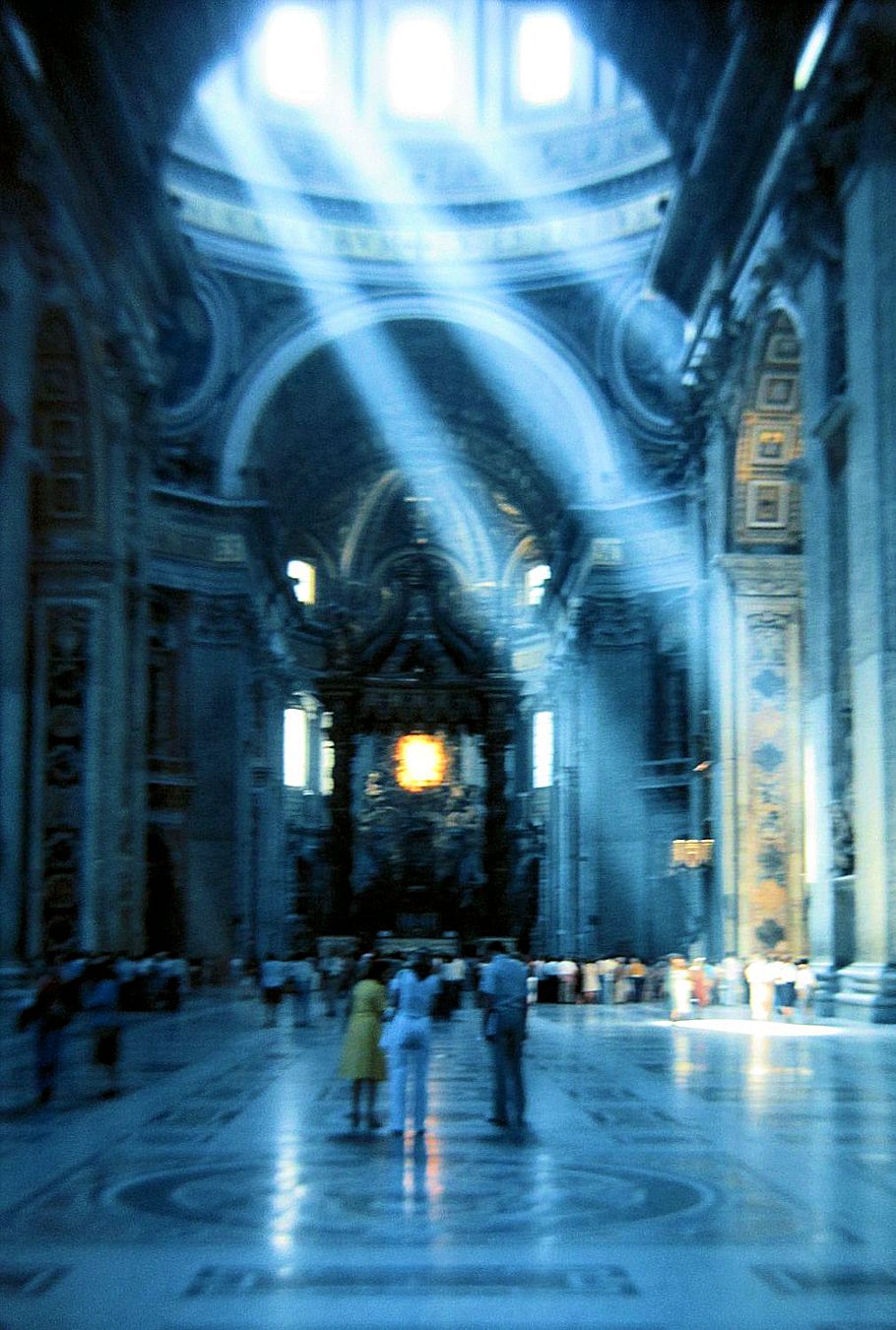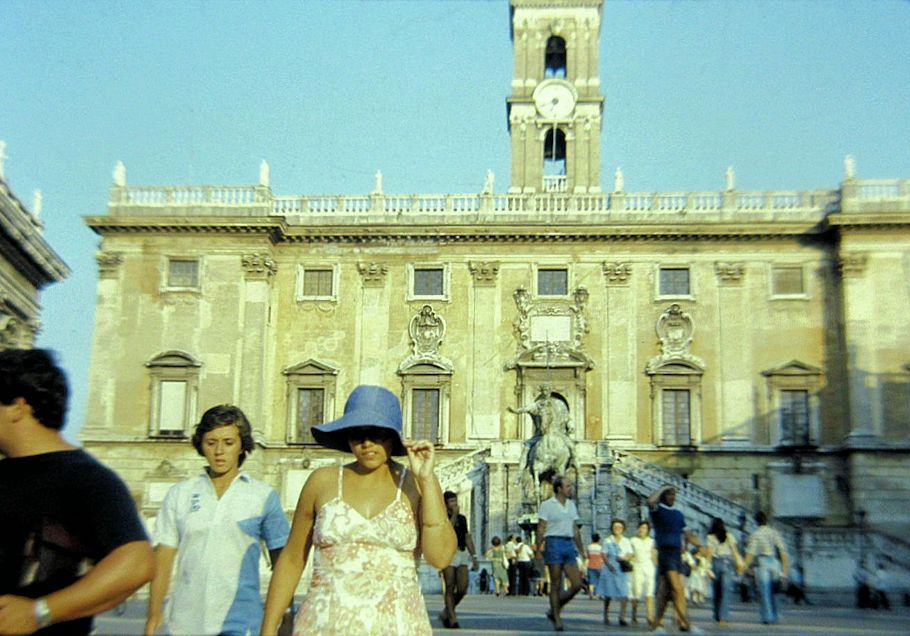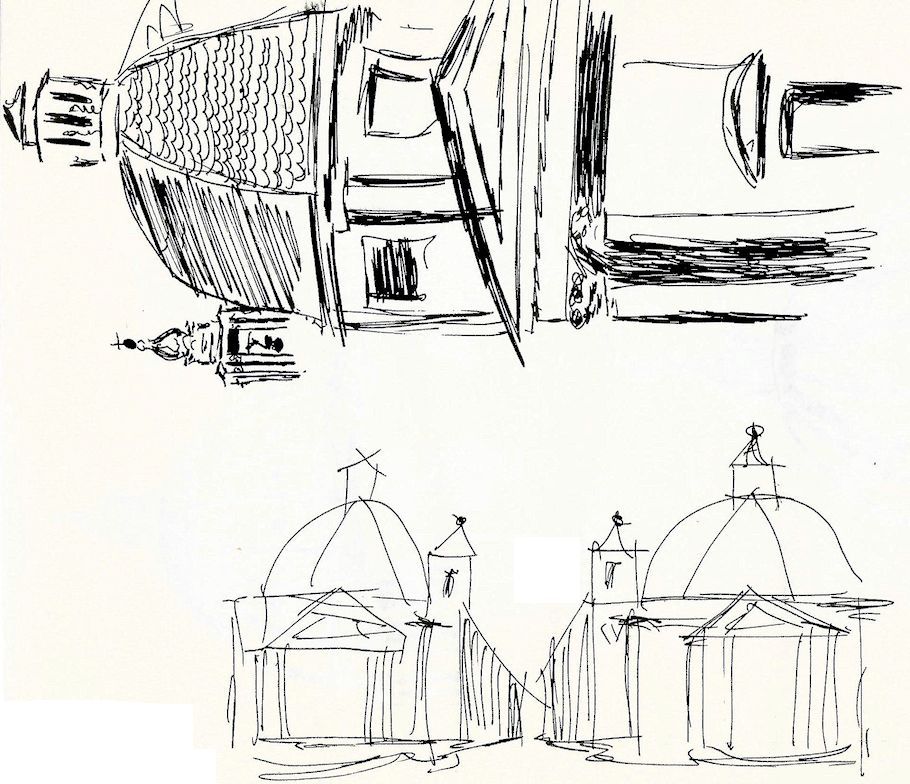15 August 1778
Etching of the new Circus Maximus plan commences.
15 August 1977
Mass at St. Peter's was not a huge spectacle. In fact, the basilica was full of tourists.

Took a long nap in the afternoon. Most others went to the beach again. Late afternoon went to the Campidoglio by myself. Also looked at the Forum and walked home via the Corso. Stopped to sketch at Popolo.


Ate at Othello's, and later sat at the Spanish Steps.
--not much of a day since it was the Assumption; most everything was closed.
15 August 2022
Still working on computer translating Part II of Calcographie des Piranesi, ou, Traité des arts d'architecture, peinture et sculpture : développés par la vue des principaux monumens antiques et modernes:
2nd PART, which will complete 2nd Treatise, and whose first issue will appear Le Fructidor year 13, and in succession from two to two months.
Antiquities of Magna Graecia, now Kingdom of Naples; 21 vol. divided into 12 sections.
1st, 2nd, & 3rd DIVISIONS - Part on the side of the Apennines.
Pompeia, famous city, buried in its entirety in the seventy-ninth year of the Christian era, the only city to emerge from its rubble: public roads, walls, city gates, tombs, temples, chapels, theatres, amphitheatres, exercise halls, schools, baths, townhouses and countryside, the cazernes, the various ornaments in stucco, terracotta, marble, paintings, arabesques, mosaics; successive discoveries will even make known the public and private uses, and even the foodstuffs preserved by petrification.
Three volumes, containing 160 plates
The text or explanation, in one volume, with observations relating to art. Everything relating to erudition will be drawn from classical authors, such as Tacitus, Pliny, Cicero, Pausanias, Polybius, etc.
4th, 5th & 6th DIVISIONS - The Theater of Herculaneum.
The geometric details will be widely known to give the idea of ??the stage, fixed and mobile fore-stages, the orchestra, the bleachers, Cavea; the means employed for the use of the canvases intended to cover the theatre, etc.
We will give the explanation and the enumeration of the precious marbles, and the bronzes which were used for the ornament or the decorations of the theater, the columns, etc.
Paintings from Herculaneum and Stabia.
Uses, utensils, bronze statues, etc.; together a description and two plans of the Royal Museum of Portici, as it is preserved; here, in addition to the figurative, we will demonstrate how the famous artists of the fifteenth century took advantage of the discovery of the Baths of Titus, whose paintings resemble, in taste and genre, those of Herculianum, and reestablished the Greek and Roman manner, as much for the coloring as for the perfection and the beautiful ideal of the design.
Three volumes, containing 300 plates
A volume intended for explanations.
7th, 8th & 9th DIVISIONS - Surroundings of Naples
Antiquities of Pstum, antica Possidonia, with demonstrations on a large scale, both geometrical and perspective, of the magnificent structures, the first, of the Doric order in Italy, and which are judged to have existed before those of Sicily and Greece, either by in relation to the simplicity and the colossal dimensions, or in relation to the style approaching the Tuscan genre. We will add particular details to the walls of the city, to the sculpture, etc.
Three volumes, containing 50 plates
A volume of explanation.
Ultimately, I'd like to compare Part II of the Calcographie des Piranesi with the 1800-01 inventory drawn up by the brothers Francesco and Pietro Piranesi, as featured and analyzed in Mario Bevilacqua's "Piranesi 1778. Ricerche Interrotte, Opere Perdute."
|